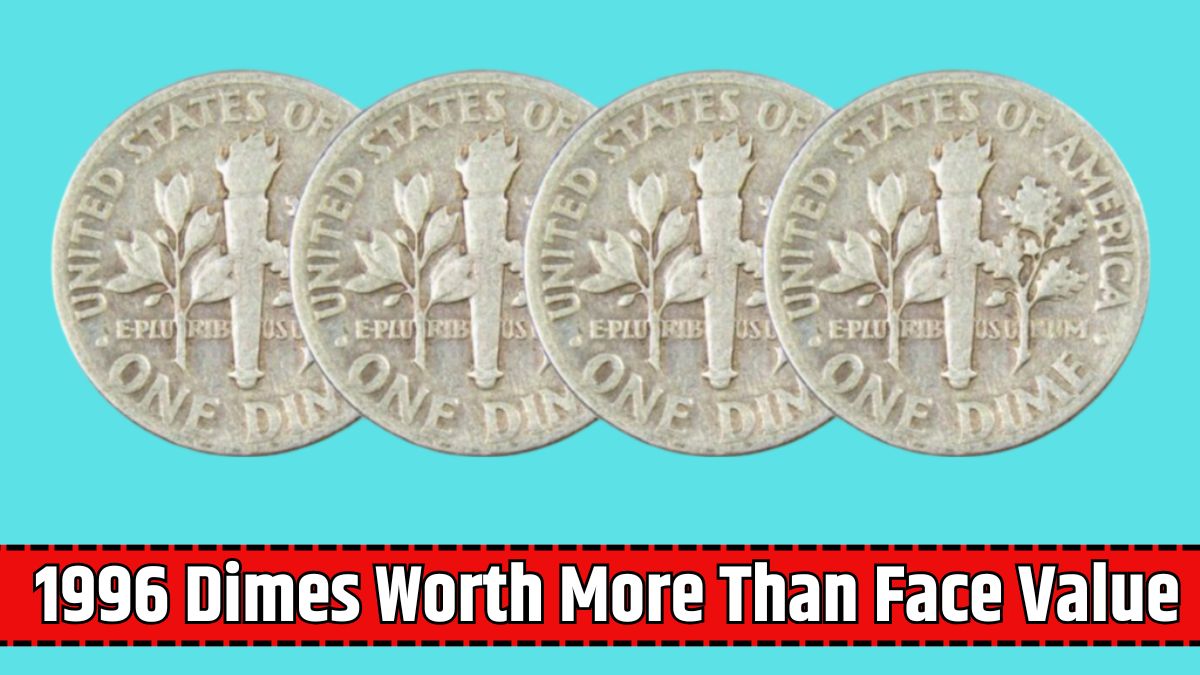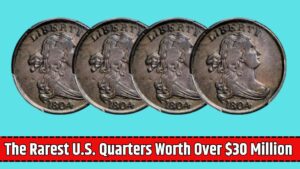At first glance, a 1996 dime might seem just like any other coin in your pocket. However, some of these dimes are worth much more than 10 cents!
Collectors prize certain 1996 dimes for their rarity, minting errors, or pristine condition. Let’s dive into what makes these dimes special and how you can spot one that’s worth keeping.
What’s Special About the 1996 Dime?
The Roosevelt Dime has been in circulation since 1946, honoring President Franklin D. Roosevelt.
These dimes are made with a copper core and nickel outer layer, so their value lies in their collectability rather than their metal content.
In 1996, three U.S. Mints produced billions of dimes:
- Philadelphia Mint: No mintmark
- Denver Mint: “D” mintmark
- West Point Mint: “W” mintmark for a special 50th-anniversary coin
Among these, the 1996-W Roosevelt Dime and certain error coins are the most valuable.
1996-W Roosevelt Dime
The West Point Mint struck the 1996-W dime to celebrate the 50th anniversary of the Roosevelt Dime series.
- Mintage: About 1.4 million, making it far rarer than standard dimes.
- Circulation: These coins were never released into general circulation and are usually found in uncirculated condition.
- Value: Depending on its condition, this dime can be worth $20 to $50 or more, especially if it’s in mint state.
1996-D Dime Errors
Coins minted in Denver often come with unique errors that can boost their value.
- Common Errors:
- Off-Center Strikes: Parts of the design are missing due to misaligned strikes.
- Die Cracks: Small cracks on the coin caused by damaged dies.
- Missing Mintmark: The “D” mintmark is faint or completely gone.
- Value: Depending on the error’s rarity, these dimes can sell for $10 to $100 or more.
1996 No-Mintmark Dime
Standard 1996 dimes without a mintmark were made at the Philadelphia Mint. While most of these are only worth face value, certain features make some of them more collectible.
- What to Look For:
- Doubled Dies: A design struck twice, creating a blurry or overlapping effect.
- Weak Strikes: A poorly defined design due to low pressure during minting.
- Value: High-grade examples with minting errors can sell for $10 to $50 or more.
High-Grade 1996 Dimes
A coin’s condition, or grade, is one of the most important factors in determining its value.
- Grades to Watch:
- Coins graded MS67 or higher (Mint State) are especially desirable.
- Look for Full Bands (FB) on the reverse torch, indicating a sharp strike with fine details.
- Value: High-grade 1996 dimes can fetch $50 or more, particularly if certified by a professional grading service.
Selling or Collecting 1996 Dimes
If you have a rare or high-grade 1996 dime, here are some ways to sell or add it to your collection:
- Coin Dealers: Experts who can appraise and buy your coin directly.
- Auctions: Rare coins often sell for competitive prices at auctions.
- Online Marketplaces: Websites like eBay connect you with collectors worldwide.
Tips for Preserving Your Coins
To keep your 1996 dimes in excellent condition:
- Store Properly: Use air-tight coin holders or albums to protect against scratches and tarnish.
- Handle With Care: Always hold coins by the edges to avoid damaging their surface.
- Avoid Cleaning: Cleaning can damage a coin’s natural finish and lower its value.
Most 1996 dimes are worth just 10 cents, but some are hidden treasures! The 1996-W Roosevelt Dime is a must-have for collectors, while error coins and high-grade examples from Philadelphia and Denver are also worth checking out.
So next time you go through your spare change, keep an eye out—you might just find a gem hiding in plain sight!
















